-
Car Reviews
- All reviews
- Midsize SUVs
- Small cars
- Utes
- Small SUVs
- Large SUVs
- Large cars
- Sports SUVs
- Sports cars
- Vans
Latest reviews
- Car News
-
Car Comparisons
Latest comparisons
- Chasing Deals
Just what is a Jaecoo? We take a deep dive into the range-topping plug-in hybrid Jaecoo J7 that promises the world for the price of a country
If you’re reading this review and wondering what a Jaecoo J7 actually is, you’re not alone, because the sub-brand itself seems a little confused.
Jaecoo is fathered by Chery, a Chinese state-owned carmaker that you may be familiar with from the Omoda 5 and Tiggo 7 Pro, but Jaecoo promises a higher level of premiumness — if that’s a word — and rugged capability.
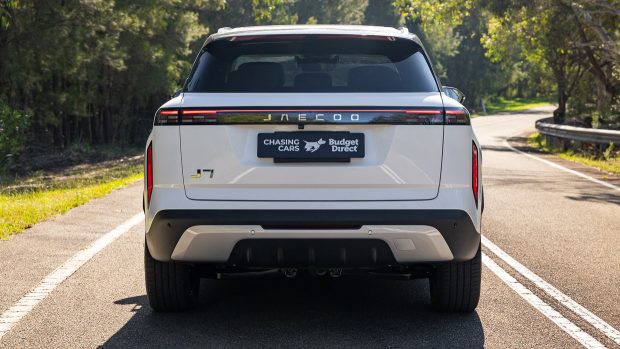
The name Jaecoo is apparently a combination of ‘Jäger’, the German word for hunter, and ‘cool’. Apt, then, that it’s about the same exterior size as the Tiger Iguana — the Volkswagen Tiguan.
And although Jaecoo promises to be more upmarket than the likes of Tiggo and Omoda products from Chery, in truth the brand’s first model, the J7, retains a remarkably low sticker price.
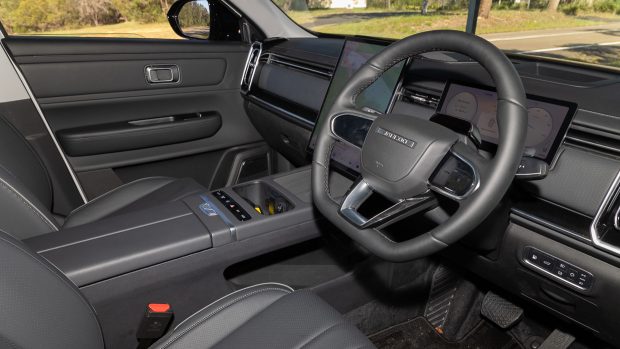
The car we have here is the most expensive plug-in hybrid version, using what Jaecoo calls a ‘Super Hybrid System’ pairing a turbo-petrol engine with generous 18.4kWh battery for a 1200km combined driving range claim. Impressive, especially at $47,990 driveaway.
To recap, the J7 is a medium SUV that promises at least some off-road performance — more on that soon with the AWD Ridge — and premium cabin for less than an equivalent Mitsubishi or Toyota. But does it deliver?
While the J7 starts at $34,990 driveaway the top-spec Summit plug-in hybrid is a fair amount more money, at $47,990 on the road.
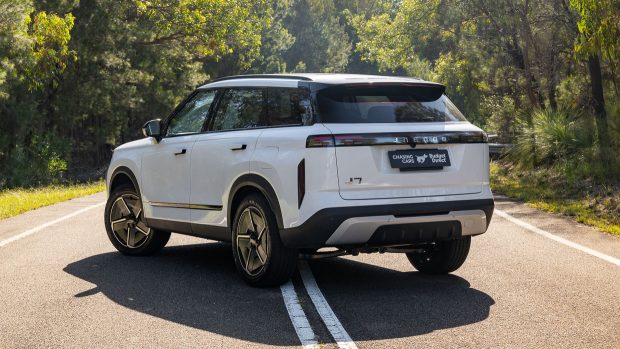
But you know what? That’s still seriously cheap for a vehicle that has both a combustion engine and a battery that obliges 90km (WLTP, 106km NEDC) electric-only driving range. See a list of rivals below, including price and electric driving range, for context.
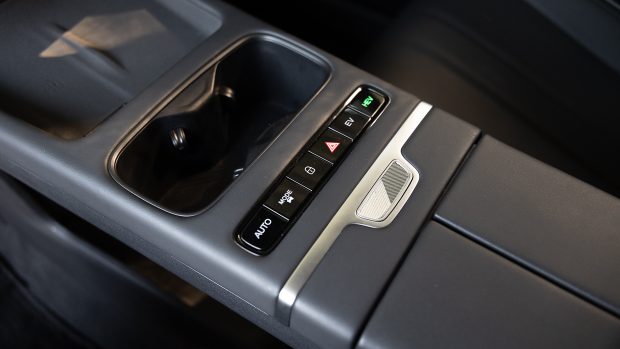
The J7 Summit isn’t poorly equipped, either, with the below standard features — justifying the comparison to high-spec rivals.
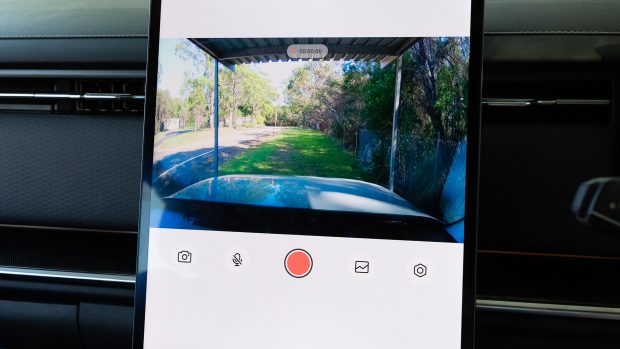
Safe to say, the J7 plug-in hybrid offers stellar on-paper value, and providing you’re okay with its slightly smaller exterior dimensions compared to the anonymous-looking BYD Sealion 6, it might be the best offering of the lot.
Spec sheet value is just one element — an impressive one — but rarely the whole story of any car. And this is where we arrive with the Jaecoo J7. Aside from blissful quietude at low speeds, the Jaecoo J7’s cost cutting is obvious as soon as you turn a wheel and much of it comes down to calibration.
The plug-in hybrid system has a 150kW/310Nm electric motor that does the bulk of the heavy lifting via a single-speed front axle. The 105kW/215Nm 1.5-litre turbo petrol four-cylinder works to keep the battery charged but also drives the front wheels directly.
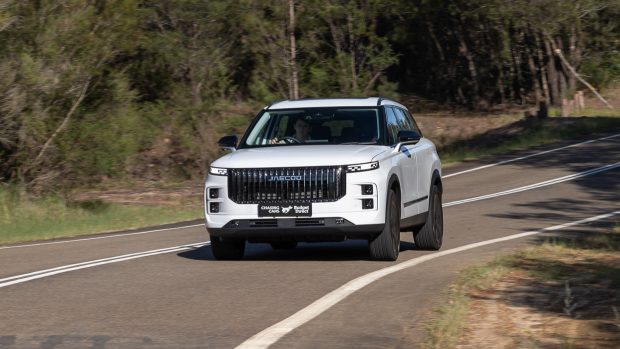
Jaecoo isn’t forthcoming with combined peak outputs, but the 1794kg (tare) J7 never feels fast, even though it has enough grunt to light up the front wheels in the wet, which is amplified by the unpredictable power delivery.
Editor Jez Spinks said the J7 “hesitates at roundabouts like it has a bad old DSG gearbox” and he’s right. It’s tricky to trust when nipping into gaps.
The grabby brake pedal suffers from a similar, digital feel, making it difficult to drive the J7 smoothly around town. There is some adjustability to regenerative braking but no one-pedal mode.
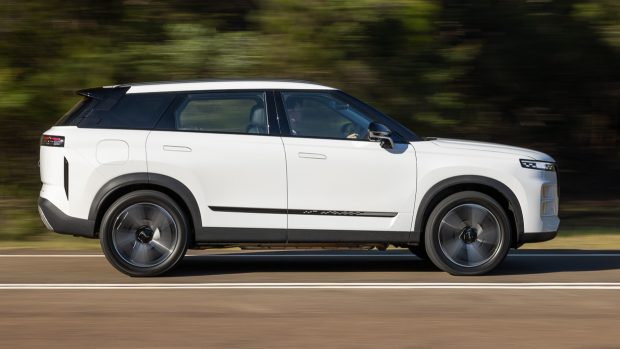
It’s a similar story with the steering feel. The J7 plug-in hybrid’s steering sorely lacks self-centring, so when coming out of a 90-degree corner the driver needs to manually unwind the last bit of lock like a SEGA rally arcade machine — it’s not pleasant.
Things don’t improve at speed, where the steering’s on-centre dead-zone makes the Jaecoo J7 tiring in the countryside.
Another problem for the J7 PHEV is tyre noise. It isn’t louder than your average mid-sizer, but the pitch of the note is very intrusive above 80km/h.
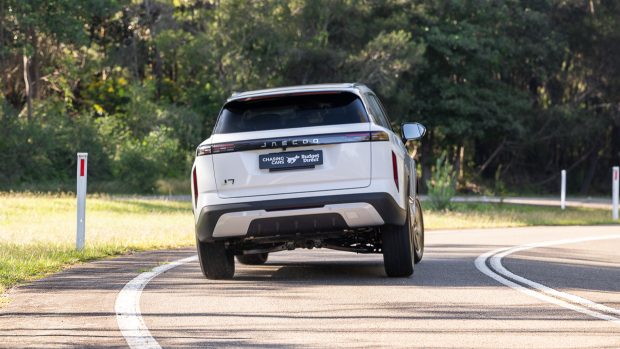
Cabin noise in general is quite high in the Jaecoo J7, where you can hear the suspension clunking away over big and small bumps alike. It’s harsh around town, too, with small bumps crashing into the stiff-legged J7’s cabin.
Thankfully for the Jaecoo J7, there’s a ‘but’, because underneath these layers of inconsistency and lumpiness it feels like there’s a good primary ride, while respectable road-holding from the 235/50 R19 Kumho Ecsta tyres smothers some of its shortcomings.
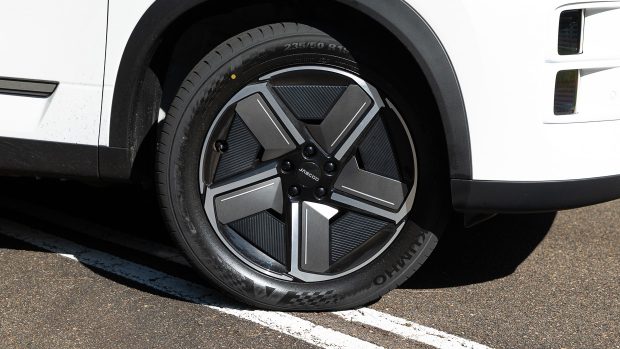
Visibility is poor with a high bonnet line and thick C- and D-pillars, though this is offset with a cool 360-degree camera system that allows you to ‘see though’ the underside of the Jaecoo J7.
The Jaecoo J7’s exterior — pop-out door handles and all — is clearly inspired by Evoques and Velars. Inside, though, the inspirations are more disparate.
Vents from Volvo, touchscreen, gear selector stalk and faux twin wireless charging pad from Tesla, and Mercedes-Benz lookalike screens and speaker grilles, the Jaecoo J7 doesn’t cut its own shape.
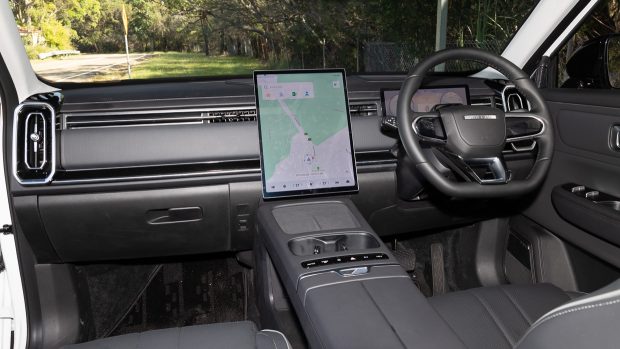
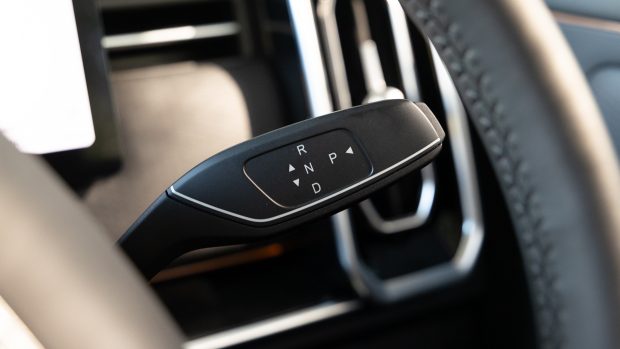
Again, it’s a shame, because Jaecoo appears to know how to screw cars together. The construction is sturdy and the materials chosen are rather plush, with squishy plastics on top of the dash and door cards.
Premium, though? Not quite. Body colour is visible all around the inside of the window shuts, there’s a tinniness to the way the doors close and the seats have sweaty, shiny vinyl upholstery parading as perforated leather.
This is a bigger question than a car review, but there’s an unhealthy obsession with trying to copy leather. The J7 would be a more pleasant place to sit, and more fit-for-purpose if its chairs wore hard-wearing non-shiny textiles instead.
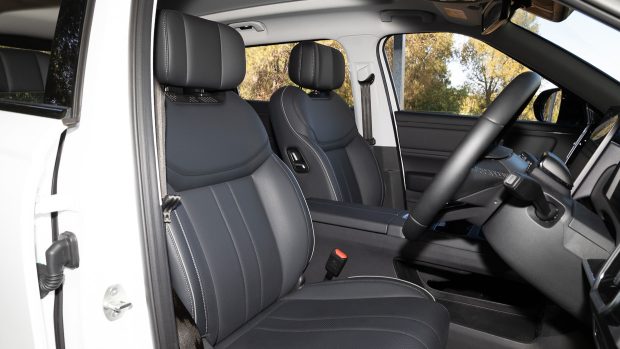
On the topic of seating, the J7 gets impressive-for-the-price heating and ventilation (accessed through the touchscreen, like the HVAC) but the six-way power driver’s seat has lumpy adjustment and a bulbous top third that pushes the back forward. The passenger’s seat is set too high as well
The central, portrait-oriented touchscreen is large and bright yet the graphics are anonymous, and interacting with the screen is often laggy. Plus, key functions are buried in difficult-to-understand sub-menus without sensible shortcuts
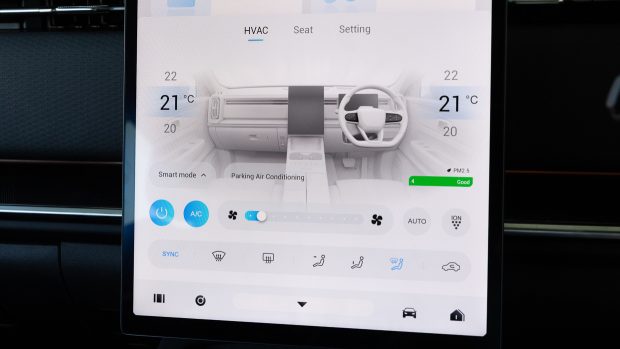
In the back, the Jaecoo performs well for its compact size. There’s plenty of space for two adults in the back, though the middle seat is seriously uncomfortable. It folds out into an armrest with two cup-holders, and there are two more bins in the doors for drinks.
As in the front, the build quality and materials are pleasant, though without ventilation the upholstery gets baking hot beneath the standard sunroof.
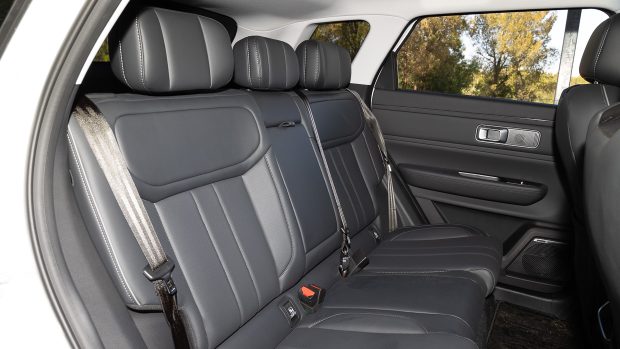
Amenities in the Jaecoo J7’s back seats include map pockets with device holders, USB-A and -C charge points, bright LED lighting, and (strangely) a singular adjustable air vent. Visibility is okay, but compromised by the high beltline and massive oblong headrests.
The Jaecoo J7’s back seat has three top tether anchors and Isofix points for two outboard seats.
The trade-off for a generous rear seat is a small-for-the-class boot, which measures 340 litres to the cargo cover or 500L to the roof. You have to lift items quite high into the boot, but once done it is fairly smart with six tie-down points, a 12-volt socket, cargo cover, shopping bag hooks and extra storage beneath the boot floor for charging cables.
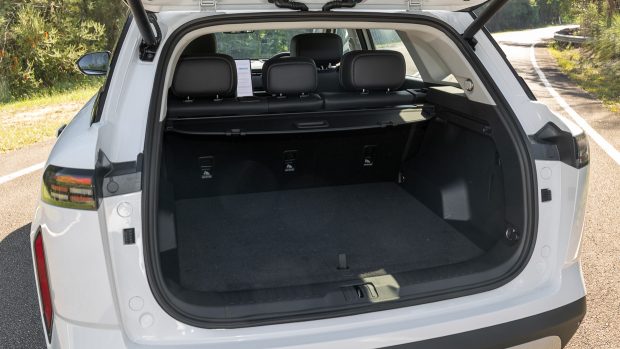
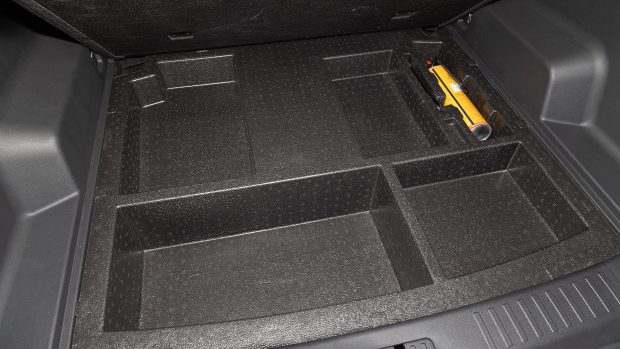
The Jaecoo J7 Summit plug-in hybrid does not have a spare tyre, but an inflation kit is provided.
The Jaecoo J7 is yet to be evaluated by safety body ANCAP, but its European relation awarded the plug-in version five stars against the latest criteria.
The J7 fits eight airbags, including front centre and driver’s knee airbags.
It was awarded 81 percent for adult occupant protection, 80 percent for child occupant protection, 80 percent for vulnerable road user protection and 80 percent for safety assist.
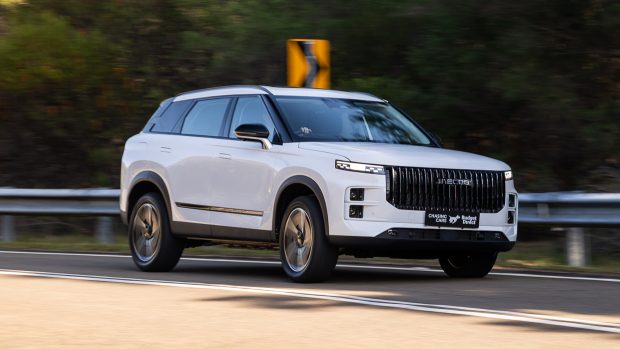
In the real world, parent company Chery has copped heavy criticism for over-active lane-keep and driver monitoring aids. The J7’s tuning is better, in a sense, because the systems are less intrusive. You can also permanently disable the speed limit assist chime.
However, at times when we hoped the lane-keep assist would step in and help, it didn’t, which means the system needs further real-world tuning. The adaptive cruise control was tiring to use as well, pulsing its speed constantly while choosing inconsistent following distances.
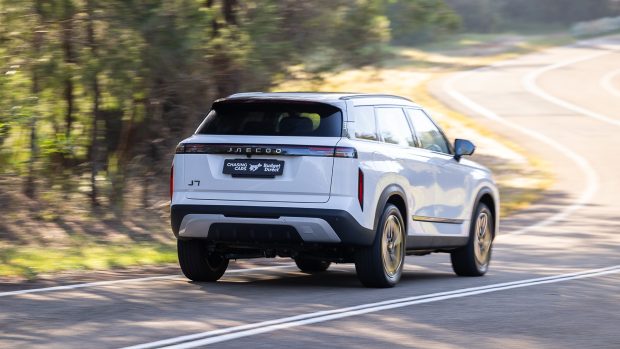
Below is a list of active safety features fitted to the Jaecoo J7.
To ease nerves about a new brand name, Jaecoo offers a solid ownership package including an eight-year, unlimited-kilometre warranty and an equal period of free roadside assist.
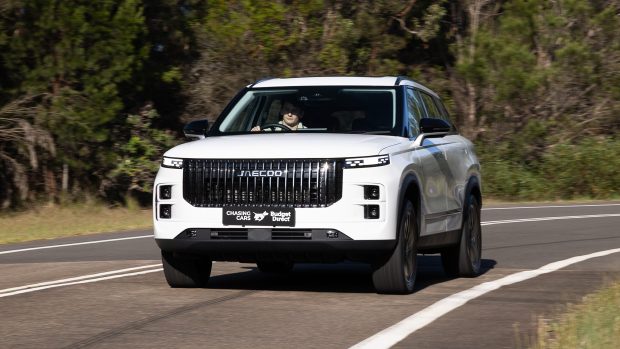
Service pricing is also capped for eight years, with maintenance due every 12 months/15,000km. Total cost over five years for the plug-in hybrid is a reasonable $1895 averaging $279 annually.
The big advantage we’re spun about plug-in hybrids are low running costs, and the Jaecoo J7 is no different. The Jaecoo J7’s combined ADR fuel consumption rating is just 1.0L/100km, for a miserly 31 grams of carbon per kilometre. That’s almost as good as an EV, right?
As always, your mileage will vary — massively — with a plug-in hybrid depending on your charging schedule and route. Our typical 200km mix of suburbs, rural roads and motorways revealed a combined 3.6L/100km figure mixing petrol and electric propulsion.
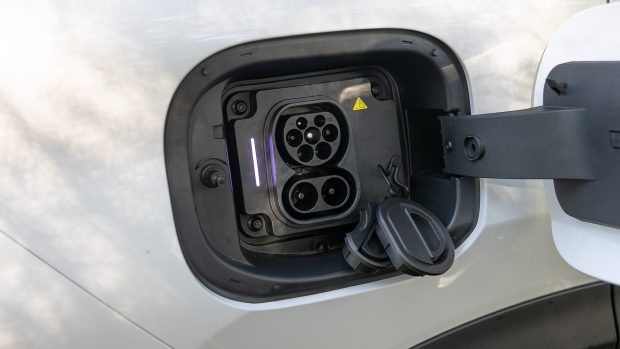
That isn’t bad, and nor is the real-world 80km electric-only range you’ll get from the car — if that is a little short of the 90km WLTP rating. Jaecoo claims the J7 will go a combined 1200km from a full tank and electricity stores, which would require you to average 5.0L/100km.
This would be achievable in favourable conditions, with occasional stops and starts, and average speeds of between 60-90km/h. On the motorway at 110km/h, though, the petrol engine chews through petrol at more like 8.0-9.0L/100km, so don’t bet on driving Sydney-Brisbane without a fill-up.
The J7 plug-in hybrid is able to charge its 18.4kWh battery at up to 40kW (DC) with a 30-80 percent session taking 20 minutes. Slower AC charging will take just under three hours with a 6.6kW maximum rate from 25-100 percent — as a PHEV, the J7 never lets its battery go fully flat.
There’s plenty to get buyers into Jaecoo dealerships, such as cheap pricing, impressive electric-only range, strong warranty promises and decent service pricing as nice dangling carrots.
Plus, there’s the look of the thing. To some it may look like a Range Rover knock-off, but others may appreciate the bluff aesthetics. Inside, the build quality is equal to a Mitsubishi Outlander plug-in hybrid yet technology blows that rival away.
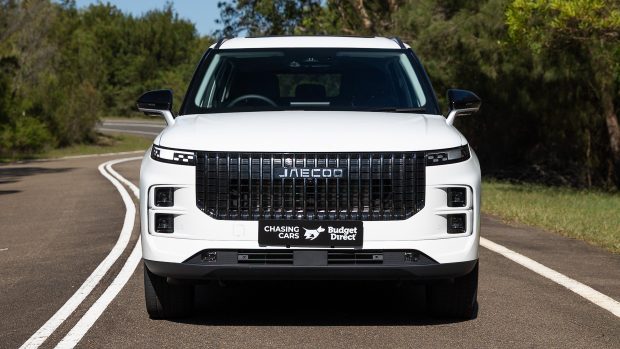
And yet, it all comes undone when you start digging deeper. The Jaecoo J7 needs steering, drivetrain calibration and suspension revisions, because under the woolly unpleasantness is a chassis that seems to have potential.
Here’s hoping a mid-life update will address the J7’s shortcomings. The Jaecoo J7’s main selling point isn’t personality or prowess, but a cheaper price than rivals.
Key specs (as tested)
About Chasing cars
Chasing Cars reviews are 100% independent.
Because we are powered by Budget Direct Insurance, we don’t receive advertising or sales revenue from car manufacturers.
We’re truly independent – giving you Australia’s best car reviews.
The estimate provided does not take into account your personal circumstances but is intended to give a general indication of the cost of insurance, in order to obtain a complete quote, please visit www.budgetdirect.com.au. Estimate includes 15%^ online discount.
^Conditions Apply
Budget Direct Insurance arranged by Auto & General Services Pty Ltd ACN 003 617 909(AGS) AFSL 241 411, for and on behalf of the insurer, Auto & General Insurance Company Limited(ABN 42 111 586 353, AFSL 285 571).Because we don’t know your financial needs, we can’t advise you if this insurance will suit you. You should consider your needs and the Product Disclosure Statement before making a decision to buy insurance. Terms and conditions apply.
Indicative quote based on assumptions including postcode , 40 year old male with no offences, licence suspensions or claims in the last 5 years, a NCD Rating 1 and no younger drivers listed. White car, driven up to 10,000kms a year, unfinanced, with no modifications, factory options and/or non-standard accessories, private use only and garaged at night.
^Online Discounts Terms & Conditions
1. Discounts apply to the premium paid for a new Budget Direct Gold Comprehensive Car Insurance, Third Party Property Only or Third Party Property, Fire & Theft Insurance policy initiated online on or after 29 March 2017. Discounts do not apply to optional Roadside Assistance.
2. Discounts do not apply to any renewal offer of insurance.
3. Discounts only apply to the insurance portion of the premium. Discounts are applied before government charges, taxes, levies and fees, including instalment processing fees (as applicable). The full extent of discounts may therefore be impacted.
4. We reserve the right to change the offer without notice.